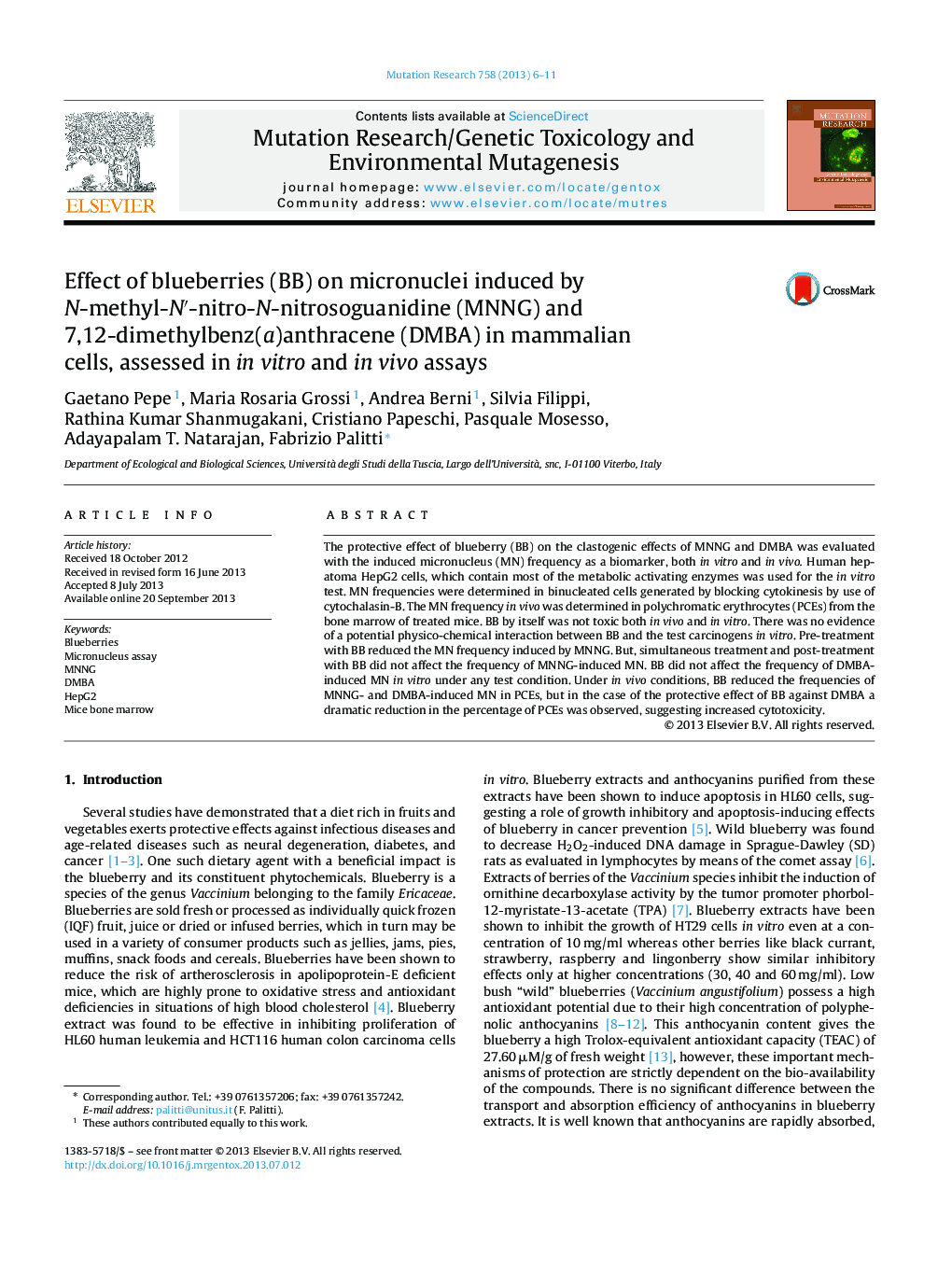| Article ID | Journal | Published Year | Pages | File Type |
|---|---|---|---|---|
| 2148012 | Mutation Research/Genetic Toxicology and Environmental Mutagenesis | 2013 | 6 Pages |
Abstract
The protective effect of blueberry (BB) on the clastogenic effects of MNNG and DMBA was evaluated with the induced micronucleus (MN) frequency as a biomarker, both in vitro and in vivo. Human hepatoma HepG2 cells, which contain most of the metabolic activating enzymes was used for the in vitro test. MN frequencies were determined in binucleated cells generated by blocking cytokinesis by use of cytochalasin-B. The MN frequency in vivo was determined in polychromatic erythrocytes (PCEs) from the bone marrow of treated mice. BB by itself was not toxic both in vivo and in vitro. There was no evidence of a potential physico-chemical interaction between BB and the test carcinogens in vitro. Pre-treatment with BB reduced the MN frequency induced by MNNG. But, simultaneous treatment and post-treatment with BB did not affect the frequency of MNNG-induced MN. BB did not affect the frequency of DMBA-induced MN in vitro under any test condition. Under in vivo conditions, BB reduced the frequencies of MNNG- and DMBA-induced MN in PCEs, but in the case of the protective effect of BB against DMBA a dramatic reduction in the percentage of PCEs was observed, suggesting increased cytotoxicity.
Related Topics
Life Sciences
Biochemistry, Genetics and Molecular Biology
Cancer Research
Authors
Gaetano Pepe, Maria Rosaria Grossi, Andrea Berni, Silvia Filippi, Rathina Kumar Shanmugakani, Cristiano Papeschi, Pasquale Mosesso, Adayapalam T. Natarajan, Fabrizio Palitti,
